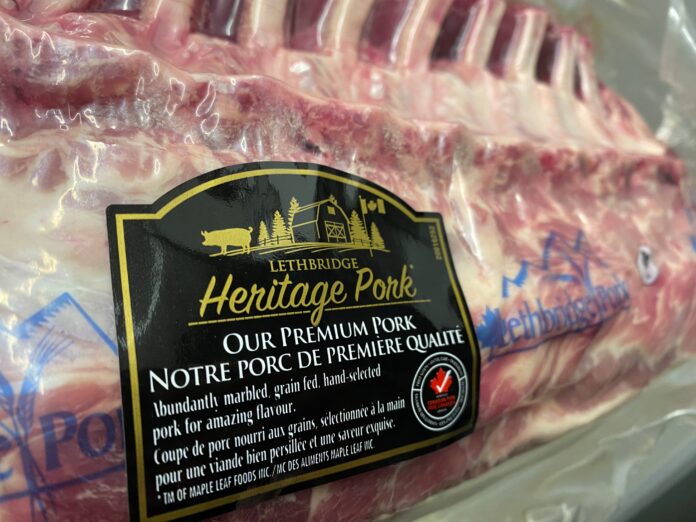By Will Verboven
Editor’s note: Will Verboven is an agriculture opinion writer and policy advisor. This article represents his perspective and analysis. He can be contacted at wverboven100@gmail.com.
Recent months have seen media reports about the rising cost of food with some revelations as to the causes of those increases. The big grocery store retailers have had to justify those increases in front of a parliamentary committee, which has seen political parties all grandstanding over concerns for the poor, exploited consumer.
By coincidence, another government-initiated committee has been looking into developing a grocery code of conduct to deal with the dubious buying practices of the big grocery chains. Some of those practices included renting shelf space, unloading fees, penalties for shorting orders, mandatory fees for product features and advertising, along with other surprise fees.
One could easily assume that such merchandising costs have simply been added to the retail price the consumer pays – if only that were true. Instead, they are paid by suppliers to big retailers who have turned them into profit centres. Suppliers really don’t have any recourse, however, except to pass down those costs to producers.
Understanding the meat merchandising landscape

I maintain that primary livestock producers bear most merchandising and promotion costs through lower prices for their commodities, with the exceptions being supply-managed products like dairy, eggs and poultry. The producer, in turn, copes with lower prices in the usual way, by becoming more efficient.
Pork processors are involved with merchandising and advertising their products, but only some of them, mostly with further-processed items like bacon, deli meats and sausages. That’s because it’s easier to differentiate quality, taste and texture with branded processed products that can return premium prices. However, it’s at the actual meat counter where merchandising changes, because consumers are presented with generic pork products, and they are often unaware of who produced or processed those products.
In the case of generic pork products, processors are not interested in direct-to-consumer promotion, as there is a possibility of inadvertently promoting their competitors. When merchandising is done by processors, the goal is to become the exclusive supplier to a retailer, gaining domestic market share over competitors. Merchandising benefits for grocers include things like pre-packaging, which is crucial, because many stores don’t have on-site meat cutters.
None of that merchandising comes for free, and it limits the ability of processors to promote directly to consumers. However, starting decades ago, red meat consumption began to decline, as chicken consumption was rising. There were various reasons for increasing chicken consumption, including innovative new products, competitive pricing, convenience and cleverly targeted advertising. Pork and beef were just not at that competitive level of meat merchandising and promotion – in reality, there were no such efforts, as processors were unwilling to participate in consumer advertising.
Hog producers, through their organizations, decided that if processors were reluctant to get into the direct-to-consumer generic pork promotion and merchandising business, then they would. It was a hard sell, as many producers felt that once they sold a hog, it was the responsibility of the processor to promote and sell the pork. That producer-financed pork promotion has cost millions. At times, it’s been hard to support, as consumption continued to decline more or less, and it bugged some producers that their hard-earned checkoff dollars directly benefited processors and retailers.
The tough part was the declining share of the consumer dollar that the primary producer was receiving. The response from producer organizations was that, without effective merchandising, pork consumption would be even lower, and prices, worse. It’s taken a generational change with many producers to accept that perspective.
Canadian pork’s global reach stands out

Over the years, pork promotion has evolved into highly sophisticated programs that can be tracked and evaluated for effectiveness. It’s all highly targeted, with Canada Pork working directly with retailers, fast food chains, food service companies and other end users, at times promoting and incentivizing specific products and cuts. But it’s a tough go, requiring significant funding, which still pales in comparison to chicken and turkey promotion, for example. Supply-managed entities like these have no price pressure, can include promotion in their production costs and do not have an export market to compete for. Whereas, it’s in offshore markets that Canada Pork and processor-exporters have been particularly successful.
Despite squaring off against marketing giants like the U.S. Meat Export Federation and Danish Crown – the organization responsible for promoting Danish pork globally, among other things – Canada has still managed to become one of the world’s largest pork exporters. Foreign markets are critical to the Canadian industry, as exports represent an even bigger share of our production than that of the U.S. or European Union (E.U.), to which Denmark and other major pork players like Germany and Spain belong. Both the U.S. and E.U. even prop up production through the use of subsidies – including lifestyle, cultural and feed support programs. These activities are sometimes protested by taxpayers, but this differs from the situation in Canada, where such supports are not available.
Commercial hog producers may be aware of the fundamentals of domestic pork merchandizing, but the process remains complicated when it comes to reaching consumers. It gets particularly convoluted when high consumer food prices are improperly connected to higher primary producer prices. In some cases, pork merchandising and promotion does add to producers’ costs, but this is generally understood to be beneficial in the long run. Although not always fully appreciated, those efforts are successful and have become a staple in the world of pork marketing.




